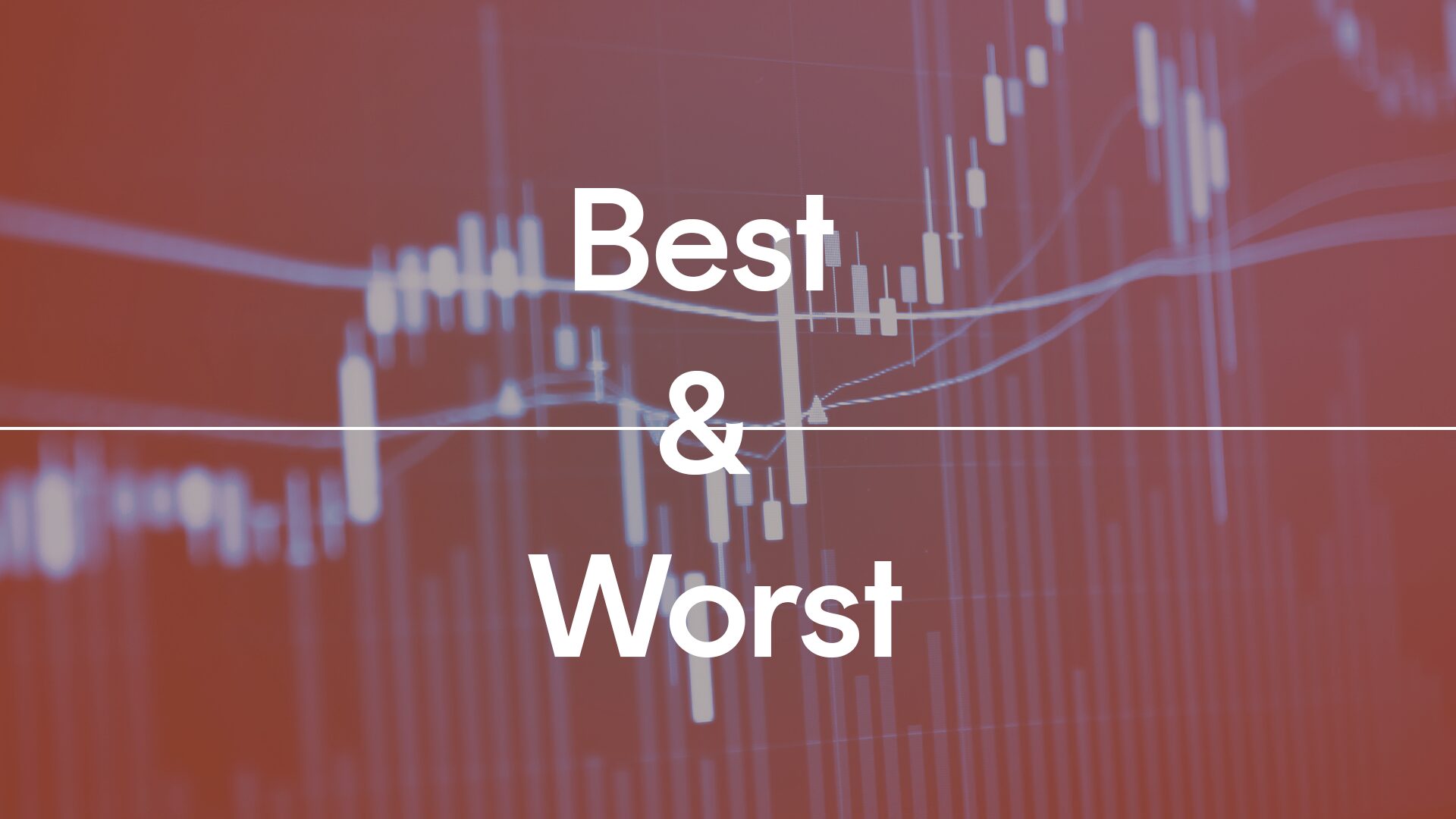Is your portfolio really diversified?
11 minutes reading time
Financial adviser use only. Not for distribution to retail clients.
Welcome to the final Betashares Best & Worst of 2023, bringing you insights into our top and bottom performing funds for the month, as well as a spotlight on some funds with interesting recent performance stories.
November saw a sudden risk-on mood in equity markets, with the best performers tending to be growth-oriented tech exposures. The primary reason for this was a lowering of future interest rate expectations globally, and especially in the US, which saw a weak inflation print that led to predictions that the Federal Reserve was finished hiking interest rates. Cryptocurrencies and related stocks were the biggest winners from this, seeing large gains after bitcoin broke through US$35k for the first time since its 2022 losses. While bad news meant good news for equities, for oil it was just bad news, falling to its lowest point in 4 months amid fears of a global economic slowdown.
For the spotlight section this month, we’re focusing on three strategies that investors might consider in times of economic uncertainty to protect their portfolios. The first, HCRD, is a fixed income exposure designed to provide investors with an attractive level of income, with low capital volatility. The second, QMAX, gives investors exposure to the Nasdaq 100 Index while allowing them the opportunity to generate extra income over the top. The third, QAU, gives investors access to one of the most historically popular defensive asset classes; gold, hedged against USD/AUD currency movements.
| Spotlight Funds (%) | 1 mth | 3 mth | 6 mth | 1 yr | 3 yr (p.a.) | 5 yr (p.a.) | Since Inception** | Inception Date |
| HCRD | 0.57 | 1.99 | 5.03 | 9.61 | – | – | 9.8 | 14/11/2022 |
| QMAX | 3.15 | -1.16 | 2.06 | 24.74 | – | – | 23.45 | 4/10/2022 |
| QAU | 1.68 | 4.07 | 2.7 | 12.76 | 2.37 | 8.22 | 1.71 | 5/05/2011 |
| Benchmarks | ||||||||
| ASX 200 | 5.03 | -1.8 | 2.05 | 1.45 | 7.15 | 8.72 | 10.77 | 3/04/2000 |
| S&P 500 | 4.21 | -0.62 | 7.53 | 14.98 | 13.68 | 14.71 | 6.8 | 31/12/1999 |
| MSCI World | 4.43 | -0.73 | 6.18 | 14.37 | 10.93 | 12.18 | 9.88 | 31/12/1969 |
| AusBond Comp | 2.97 | -0.47 | -1.18 | 0.2 | -3.64 | 0.41 | – | 30/09/1989 |
Source: Morningstar, Bloomberg. As at 30 November 2023. Past performance is not an indicator of future performance of any index or fund. All performance figures quoted in AUD.
Spotlight:
- Betashares Interest Rate Hedged Australian Investment Grade Corporate Bond ETF (ASX: HCRD): HCRD celebrated its first full year since inception in November, making it a perfect time to look back on its performance. The fund invests in our Betashares Australian Investment Grade Corporate Bond ETF (ASX: CRED), which itself invests in a portfolio of up to 50 senior, fixed-rate, investment grade Australian corporate bonds. HCRD then sells bond futures contracts to seek to hedge out the interest rate risk in CRED, resulting in a portfolio with a return profile similar to that of a floating rate note exposure. Over its first year, the fund returned 9.76%, which was comprised of 5.82% in income and 3.94% price return. The major driver of the price return was the compression of credit spreads, which were reflections of their US counterparts and occurred despite an uptick in corporate bankruptcies, which reached their highest level since 20101. While a 9.76% one-year return is respectable in itself, it’s the lack of volatility that’s been most striking feature of HCRD. The fund’s largest drawdown over the period was just 1.79%, which occurred in March during the global banking crisis that culminated with Credit Suisse collapsing and being absorbed by its historical rival UBS.
- Betashares Nasdaq 100 Yield Maximiser Fund (managed fund) (ASX: QMAX): QMAX also recently ticked over 1 year of track record, offering an opportunity for investors to generate income while being exposed to the US tech sector. The fund’s covered call strategy obtains exposure to the Nasdaq 100 using a combination of a US listed ETF and our own Betashares Nasdaq 100 ETF (ASX: NDQ), and then sells call options over the top in order to generate extra income. As covered previously in Best & Worst, the trade-off of a covered call strategy is that you are expected to give away some potential capital upside in exchange for the extra income generated. For this reason, QMAX did end up trailing the Nasdaq 100 Index over the 12 month period to the end of November, however still managed to appreciate 16.02% in price. On a total returns basis, the fund actually kept up with the Nasdaq 100 Index for the majority of the year, only seeing material underperformance in a one month period between the middle of May and June, in which the Nasdaq saw its most rapid appreciation, gaining over 13% in a single month. During this period the call options in QMAX ended up in the money and stopped the fund from participating in some of the gains. However, the result of the covered call strategy was that in the 12 months to the end of November, QMAX generated almost 9% in income for investors, compared to just over 3% for the underlying Nasdaq 100 Index.
- Betashares Gold Bullion ETF – Currency Hedged (ASX: QAU): The last two months has seen a resurgence of interest in gold as an asset class, as the falling interest rates make the non-income bearing aspect of gold more tolerable for investors. As well, a largely pessimistic economic outlook for the coming year and continued political uncertainty in the US and globally is providing gold bugs more reason to use gold as a defensive allocation in their portfolio2. Some interesting price action occurred on the morning of 4 December 2023, when the price of gold shot up to nearly US$2120, an all time high and the first time it has ever breached US$2100. It then took a rapid dive immediately afterwards, ending the trading day below where it started. While it’s impossible to say exactly what caused this sudden spike, it’s likely that many traders had set US$2100 as a good point to take profits. It’s unusual for gold to see this level of intra-day price movements, with the last time it traded in a range wider than US$100 in a single day being during Covid in 2020. Monday’s movements marked gold’s second ever largest decline in the same day after reaching an all time high, topped only by a 5.29% decline from its high point on 2 October 1979, after which it more than doubled until its peak in the following January2.
| Best* (%) | 1 mth | 3 mth | 6 mth | 1 yr | 3 yr (p.a.) | 5 yr (p.a.) | Since Inception** | Inception Date |
| 1. IPAY | 17.45 | 1.11 | 3.77 | 5.25 | -11.85 | 13/12/2021 | ||
| 2. CRYP | 16.63 | 8.77 | 17.13 | 78.52 | -43.52 | 2/11/2021 | ||
| 3. RBTZ | 11.76 | -3.42 | -5.35 | 26.79 | -2.2 | 8.91 | 5.77 | 12/09/2018 |
| 4. CLDD | 11.46 | -1.15 | 9.51 | 25.17 | -4.15 | 22/02/2021 | ||
| 5. HNDQ | 10.15 | 2.1 | 10.43 | 29.79 | 6.83 | 9.45 | 20/07/2020 |
Source: Morningstar, Bloomberg. As at 30 November 2023. Past performance is not an indicator of future performance of any index or fund. All performance figures quoted in AUD.
Best:
- Betashares Future of Payments ETF (ASX: IPAY): IPAY benefited from broad-based gains in November, as well as especially strong performances from some of its largest holdings. Of its 36 equity holdings, 29 saw positive returns, with 19 of those gaining at least 10%. As well, 5 stocks representing a total 20% of the fund saw gains of over 50% during the month, propelled by strong outlooks and favourable market conditions. Cryptocurrency exchange Coinbase (+54.41%) was the biggest contributor, gaining on a combination of rising crypto prices and continuing crises for its largest competitors. FTX founder Sam Bankman-Fried and Binance founder Changpeng Zhao were both convicted of criminal charges in November (for fraud and violations of the Bank Secrecy Act, respectively) and both likely face extended jail sentences. While FTX filed for bankruptcy in late 2022, Binance is still the world’s largest crypto exchange, although its market share has fallen from 60% to 50% in recent months on the back of the controversy3. Amsterdam-based payment platform Adyen NV (+66.50%) gained after executives revised downwards the company’s net revenue and profitability targets for the next three years, an unusual outcome that analysts attributed to investors appreciating guidance and targets that they deemed to be more realistic than those in the past4. Block Inc (+50.46%) was the third largest contributor, rising 25% in a day after it lifted earnings guidance, said it would cut 1,500 global staff and announced a surprise $1 billion share buyback5.
- Betashares Crypto Innovators ETF (ASX: CRYP): Bitcoin’s gains accelerated in November, as tailwinds continued to gather around the potential approval of spot bitcoin ETFs and the upcoming bitcoin halving event. Investors are betting that the ETF structure will increase investment appetite for the asset as the investments will be better regulated and more accessible than they have been in the past6. The halving is an event in which the amount of bitcoin that can be mined from a given amount of processing halves, designed to make it harder to mine bitcoin and ensuring that there is only ever a finite amount of bitcoin in circulation. In the past, the value of bitcoin has risen following each halving. Adding to the bitcoin enthusiasm was the lowering of future interest rate expectations7. Like gold, cryptocurrencies typically do not generate income and therefore have tended to be more attractive to investors in a low interest rate environment. The largest contributor to the fund’s performance was Coinbase, followed by Galaxy Digital Holdings (+28.47%) and Marathon Digital Holdings (+29.72%). The previously mentioned convictions of Sam Bankman-fried and Chanpeng Zhao seemed to be primarily positive news for the crypto industry, providing the dual benefits of ‘cleaning up’ the industry which has long been plagued by shady behaviour, as well as hurting some of the largest competitors to the stocks held in CRYP8.
- Betashares Global Robotics and Artificial Intelligence ETF (ASX: RBTZ): RBTZ benefited in November from the continuing AI fever, as well as the general boost to growth exposures that occurred alongside slightly moderating inflation and falling global interest rate expectations. NVIDIA (+9.50%) was the largest contributor to the fund’s performance after announcing quarterly earnings of $4.02 per share vs $3.37 per share expected9. Intuitive Surgical Inc, a robotic surgery device manufacturer, was the second largest contributor after gaining 13.18% over the month, while Swedish-Swiss multinational ABB Ltd gained 13.82%. The company specialises in industrial electrification and automation, and in November upgraded its revenue growth target to 5-7% from 3-5% thanks to accelerating demand for sustainability driven electrification and automation as the world moves towards stronger emissions targets10.
| Worst* (%) | 1 mth | 3 mth | 6 mth | 1 yr | 3 yr (p.a.) | 5 yr (p.a.) | Since Inception** | Inception Date |
| 1. OOO | -6.04 | -6.03 | 16.69 | -1.64 | 26.63 | -7.63 | -12.94 | 11/11/2011 |
| 2. USD | -4.12 | -1.11 | 0.03 | 5.6 | 5.28 | 3.37 | 3.67 | 31/01/2011 |
| 3. EEU | -1.4 | -1.7 | 0.04 | 7.12 | -0.23 | 0.48 | 1.17 | 8/07/2011 |
| 4. POU | 0 | -1.27 | 1.98 | 11.63 | 3.14 | 2.59 | 2.2 | 8/07/2011 |
| 5. FUEL | 0.17 | -0.62 | 12.71 | -3.37 | 24.65 | 4.52 | 5.89 | 16/06/2016 |
Source: Morningstar, Bloomberg. As at 30 November 2023. Past performance is not an indicator of future performance of any index or fund. All performance figures quoted in AUD.
Worst:
- Betashares Crude Oil Index ETF – Currency Hedged (Synthetic) (ASX: OOO): Crude oil prices slumped to a 4-month low in mid-November, with investors worried about a global economic slowdown after weak data was released in the US and Asia11. WTI crude futures fell to a low of US$72.30 on 16 November, down 23.62% from their 2023 high of US$94.66 on 28 September. The big data points were US unemployment, which rose to a 3-month high, and retail sales, which fell for the first time in seven months. This data added to expectations that the economy is beginning to slow down, and that the Federal Reserve is finished hiking interest rates. Despite this, Chinese data surprised on the upside, with industrial output and retail sales growth beating expectations and giving oil investors a reason to be optimistic for the coming year.
- Betashares U.S. Dollar ETF (ASX: USD): The AUD monthly low came on the first day of November, starting the month of at 63.18 US cents, and finished the month at its highest point since 1 August, at 66.76 US cents. The primary cause of the gain was weakness in the US dollar, cause by a soft inflation print fuelling confidence that the Federal Reserve is finished hiking interest rates, and may begin cutting in the first half of 2024. The RBA’s 25bps hike and falling oil price did cause small drops in the AUD early in the month, but they were quickly regained by the US inflation print, as well as confidence in China after the government published a ‘Whitelist’ of real estate developers who would be eligible for financial support12.
- Betashares Euro ETF (ASX: EEU)#: The story was very similar for the EUR/AUD currency pair, with expectation of overseas interest rate decreases paired with another RBA hike leading to AUD strength. Accompanying this was a general increase in global risk sentiment, with the Australia dollar benefitting due to its perception as a ‘risk on’ currency12.
For trailing performance of all Betashares funds please see: Betashares Monthly Performance – November 2023
*Excludes short and geared funds.**Annualised for funds with more than 1 year’s performance history.^ No forward P/E estimate available.# EEU was closed on December 7 and is no longer available to trade on the ASX.
References:
1: Betashares
2: Bloomberg
3: CNBC
4: Bloomberg
5: AFR
6: Reuters
7: BBC
8: Betashares
9: CNBC
10: ABB Ltd
11: Reuters
12: NAB
Betashares Capital Limited (ABN 78 139 566 868, AFSL 341181) (Betashares) is the issuer of the Betashares Funds. This information is general only, is not personal financial advice, and is not a recommendation to invest in any financial product or to adopt any particular investment strategy. You should make your own assessment of the suitability of this information. It does not take into account any person’s financial objectives, situation or needs. Past performance is not indicative of future performance. Investments in Betashares Funds are subject to investment risk and investors may not get back the full amount originally invested. No assurance is given that any of the companies mentioned above will remain in the relevant fund’s portfolio or will be profitable investments. Any person wishing to invest in a Betashares Fund should obtain a copy of the relevant Product Disclosure Statement and Target Market Determination from www.betashares.com.au and obtain financial and tax advice in light of their individual circumstances.
Future results are inherently uncertain. This information may include opinions, views, estimates and other forward-looking statements which are, by their very nature, subject to various risks and uncertainties. Actual events or results may differ materially, positively or negatively, from those reflected or contemplated in such forward-looking statements. To the extent permitted by law Betashares accepts no liability for any loss from reliance on this information.




